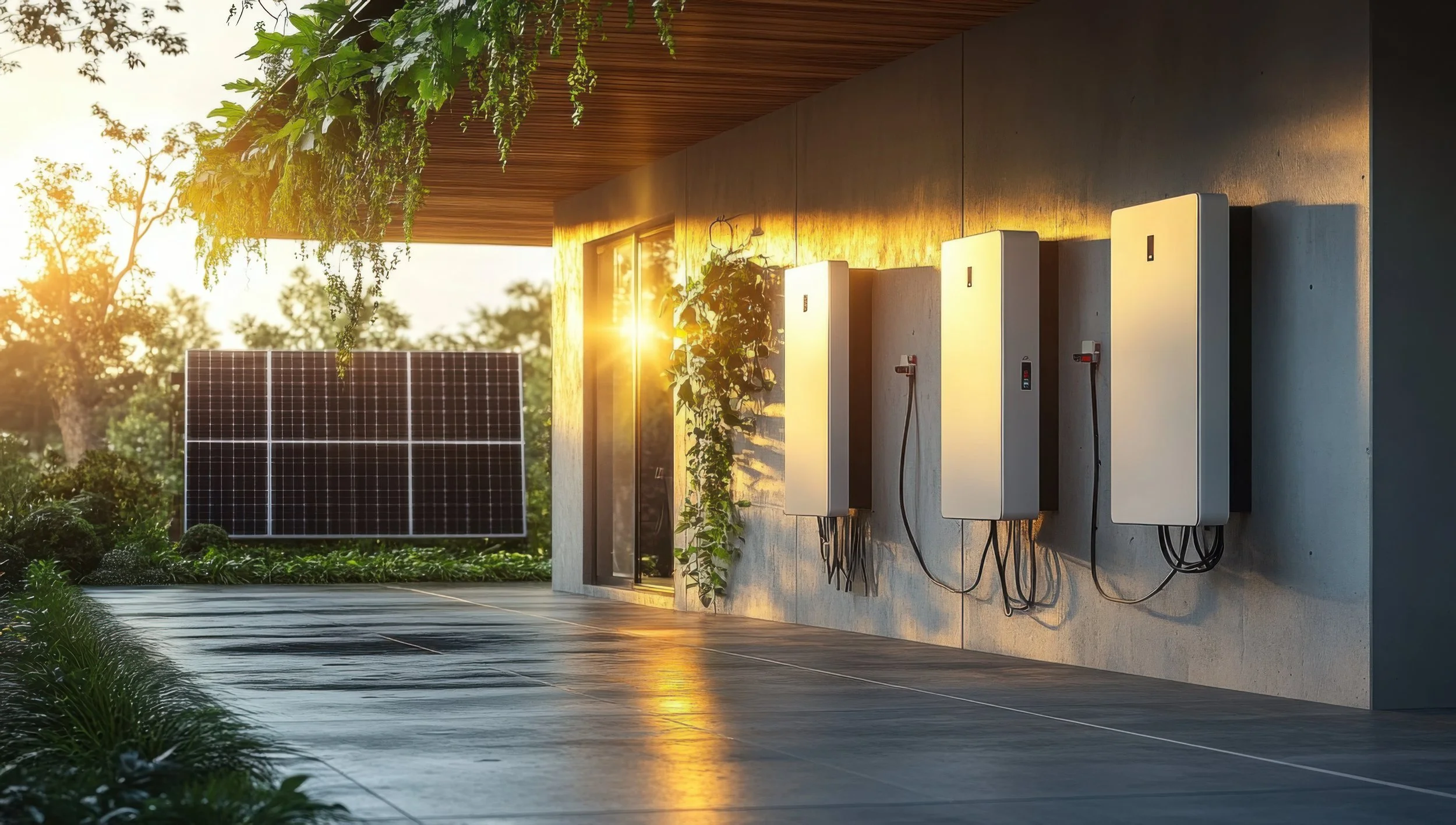Rooftop Solar May Be Out—But Solar Windows Are In
Japan is investing in perovskite solar panels—ultrathin, flexible, and potentially game-changing. Could solar windows replace rooftop panels in the near future?
How Japan’s Perovskite Push Could Change the Future of Clean Energy
While the U.S. solar market is grappling with tax credit rollbacks and policy uncertainty, Japan is leaning into innovation—hard.
In pursuit of its net-zero emissions goal by 2050, Japan is making bold investments in perovskite solar panels, an emerging technology that could eventually replace traditional rooftop solar with ultra-lightweight, flexible, and even transparent alternatives.
And unlike conventional silicon-based panels, these perovskite cells use iodine—a resource that Japan has in abundance—helping to secure domestic supply chains and reduce dependence on imported materials.
What Are Perovskite Solar Panels?
Perovskite panels are made from a class of synthetic materials that can mimic the light-harvesting properties of silicon, but with far more flexibility and ease of production. These panels:
Can be ultra-thin—as little as 1 millimeter thick
Weigh about one-tenth as much as a traditional solar panel
Can be applied to curved surfaces, flexible materials, and even windows
Companies like Panasonic and Sekisui Chemical are already investing heavily, testing perovskite installations on domed stadiums, windowpanes, and plastic manufacturing surfaces.
If scaled successfully, Japan estimates that perovskite solar could supply up to 50% of its electricity demand by 2040.
What’s the Catch?
Like any emerging technology, perovskites aren’t perfect—yet.
The current limitations include:
Shorter lifespans than silicon panels
Lower energy efficiency in most commercial prototypes
The use of toxic lead compounds, which raises concerns about long-term safety and disposal
Still, if Japan succeeds in refining the technology—especially by improving durability and finding a lead-free formula—the potential applications are endless. Solar windows, building-integrated PV, and wearable solar fabrics could all become part of our daily lives.
Why This Matters for the World
Japan’s perovskite bet isn’t just about national energy independence. It represents a possible leap forward for global clean energy innovation.
If these thin, flexible, and aesthetically pleasing panels can overcome their limitations, they could revolutionize how and where solar is deployed—especially in dense urban areas or on structures not suited for heavy rooftop panels.
From skyscrapers to stadiums, perovskite technology could expand the solar landscape far beyond rooftops—and help us build a cleaner, brighter future for everyone.
Solar Developer Announces Layoffs Amid Accelerated ITC Phaseout
New Leaf Energy has laid off nearly 20% of its workforce after a surprise federal decision to accelerate the phaseout of the solar investment tax credit (ITC). Learn what this means for the future of solar development—and how the industry is adjusting.
New Leaf Energy Cuts Jobs as Industry Braces for Broader Fallout
The solar industry is beginning to feel the real impact of recent federal policy shifts—and for some companies, the effects are already landing on employees.
New Leaf Energy, a renewable energy development firm formed from a unit of the former Borrego Solar, has announced that it has laid off 41 employees—nearly 20% of its workforce—as a direct result of changes to the federal Investment Tax Credit (ITC) for solar and wind energy projects.
What Changed with the Federal Solar Tax Credit?
Under previous legislation, the 30% federal ITC was available for qualifying solar and wind projects that began construction before 2032. But in a major policy reversal tied to a recent Congressional budget deal, those deadlines have been drastically moved forward:
Projects must now begin construction by July 4, 2026
And be placed in service by Dec. 31, 2028 (or by 2027 for some project types)
These tighter deadlines are sparking uncertainty across the renewable energy development sector—especially among utility-scale and community solar developers.
Layoffs Begin in a Shifting Industry Landscape
New Leaf Energy’s layoffs are among the first formal job cuts attributed directly to the ITC changes, but they are unlikely to be the last. According to industry insiders, residential and commercial solar companies across the U.S. are now bracing for similar reductions in hiring, project slowdowns, and possible downsizing.
Pine Gate Renewables, another prominent developer of utility-scale solar and battery storage projects, is rumored to have laid off 15% of its workforce—roughly 50 employees—though the company has declined to confirm these reports publicly.
Some companies appear to be shedding staff quietly, avoiding formal announcements in an attempt to protect internal morale or public perception.
New Leaf Energy Responds to Market Headwinds
Despite the job cuts, New Leaf Energy says it remains financially strong. In a LinkedIn statement, the company emphasized that it is well-capitalized, with a diverse and active pipeline of solar, wind, and battery storage projects across the U.S.
However, the company acknowledged that the sudden shift in tax policy has narrowed the development landscape.
“Reducing the size of the company is intended to provide stability and free cash while we adapt to a changed market,” the statement said. “The pathway to developing clean energy projects has narrowed—but it has not vanished.”
Founded in 2021, New Leaf’s focus includes community and utility-scale solar, energy storage, wind generation, and EV charging infrastructure. Its largest current development is the 100 MW Honey Ridge Solar facility in Jefferson County, New York, expected to begin operations in March 2029.
What This Means for the Solar Industry
These early layoffs could signal a larger wave of employment shifts as companies recalibrate around reduced timelines and tightened tax benefits. For the solar industry to thrive under the new rules, developers will need to streamline operations, secure funding faster, and accelerate project delivery timelines.
The solar transition isn’t over—but the road just got steeper.
Trump Ends Federal Solar Tax Credit Early: What It Means for Homeowners and what to do now
President Trump’s “Big Beautiful Bill” ends the 30% federal solar tax credit after 2025—years ahead of schedule. Learn what that means for your energy options, how much it could cost you, and why acting now is the smartest move homeowners can make.
Image courtesy of Opening Bell Daily
In a move that surprised much of the renewable energy industry, President Trump recently signed the “Big Beautiful Bill,” a sweeping legislative package that, among other things, accelerates the end of the federal solar tax credit.
This 30% tax incentive, long considered one of the most powerful tools in making rooftop solar affordable for homeowners, will now expire on December 31, 2025—nearly a decade earlier than originally planned.
If you’ve been thinking about solar but waiting for the “right time,” that moment just became right now.
What Is the Federal Solar Tax Credit—and Why Does It Matter?
The Federal Investment Tax Credit (ITC) allows homeowners to deduct 30% of the total cost of a solar energy system from their federal taxes. It’s been a game-changer, shaving thousands off solar installations and making clean energy accessible for the average household.
Right now, a typical 11-kilowatt solar array costs around $28,160 before incentives, according to EnergySage. With the 30% tax credit applied, that price drops to roughly $20,000. But after 2025, with the credit gone? You’ll be paying full price—no exceptions.
That’s not just a budget issue—it could put solar out of reach for tens of thousands of American homeowners.
Electricity Demand Is Surging—Just as Solar Support Fades
If the policy shift wasn’t enough, there’s another looming issue: electricity demand is about to explode.
Thanks to the rapid growth of AI data centers and digital infrastructure, experts are forecasting a 130% increase in electricity consumption by 2030. Without sufficient rooftop solar adoption to help relieve grid pressure, utilities will need to build out costly infrastructure—and guess who funds that?
You, the ratepayer. Expect higher utility bills and more volatility as utilities scramble to meet growing demand—without the solar adoption that could’ve helped offset it.
Already Have Solar Panels? Here’s What It Means for You
If you already have solar installed and have claimed the tax credit, you’re in a great position. Your system is grandfathered into the current policy, and you’ll continue to enjoy the savings, performance, and peace of mind your setup offers.
Even better? As energy prices rise, your investment becomes more valuable—delivering a faster return than you may have originally planned.
Those who secured solar installations over the past few years, especially when equipment prices and interest rates were lower, will likely emerge as the real winners of this policy shift.
If You’re Considering Solar:
Start your solar journey now.
With a looming deadline, installation timelines will stretch. It typically takes 2–4 months from quote to installation, and experts expect a late-2025 installation rush that could lead to delays, higher prices, and missed opportunities.
Waiting until the last minute could mean missing out altogether.
If You Already Have Solar:
Think about battery storage.
Adding energy storage (ESS) while state and local incentives are still active is a smart way to make your system even more resilient. With grid instability on the rise, backup power is becoming essential, not optional.
If Solar Isn’t Feasible for You:
Focus on efficiency.
Solar isn’t the only way to reduce your energy costs. Upgrading insulation, investing in smart thermostats, and swapping in efficient appliances can make a big impact—with a smaller upfront investment.
The Bottom Line: Solar Is Still a Smart Move—But Timing Is Critical
This new policy reality changes the landscape. The financial case for solar remains strong—but only if you act before the credit disappears.
Whether you're looking to reduce your utility bills, gain energy independence, or increase your home’s value, waiting is no longer an option. The sooner you move, the better your chances of securing meaningful savings and a reliable energy future.
Can Colorado’s Grid Keep Up? Why More Homeowners Are Turning to Battery Backup
Colorado homeowners are experiencing longer, more frequent power outages as demand on the electric grid grows. Learn how battery backup systems can protect your home from blackouts—and how adding solar can give you true energy independence.
Colorado’s population continues to rise, with new homes and developments popping up to meet the demand. But there’s one big question on the horizon: Can our electric grid keep up?
Recent data suggests… maybe not.
Colorado’s Power Grid Is Under Pressure
Electricity demand is rising fast, and our aging infrastructure is struggling to keep pace. The effects are already hitting homeowners across the state. In fact, power outages are becoming not only more frequent—but significantly longer.
According to recent data, the average Xcel Energy customer in Colorado experienced nearly 6 hours of outage time in 2024. That’s a major spike from the 166-minute annual average seen across the previous decade. It’s not just one-off storms or flukes anymore—it’s a pattern.
Even worse, customer service wait times are growing, leaving many Colorado residents in the dark—both literally and figuratively—when issues arise. As climate events increase and the load on our grid grows, this trend isn’t likely to reverse anytime soon.
The Best Way to Prepare for an Outage? Avoid It Completely
Xcel Energy and other providers offer standard outage prep checklists—flashlights, backup phone chargers, and emergency kits—but let’s be honest: what you really want is to keep the lights on.
Rather than prepare for an outage, why not install a system that prevents one from affecting you in the first place? This is where battery backup systems come in.
What Is a Battery Backup System—and Why Is It a Game Changer?
Also called Energy Storage Systems (ESS), battery backups are cutting-edge home energy solutions that automatically provide power to your home during an outage. When the grid fails, the battery kicks in instantly to deliver electricity to your home’s essential circuits.
Modern systems are so seamless, you won’t even notice the switchover. There’s no fumbling with switches or waiting for a generator to fire up. The transition is instant, clean, and quiet.
Battery systems are also a smart option for families with medical needs, remote workers, or anyone who relies on stable, 24/7 power. And they’re more affordable and reliable than ever before.
Add Solar for a Complete, Resilient Home Energy Solution
If you want to take things even further, pair your battery with a solar energy system. Together, they create a powerful loop: solar panels charge your battery during the day, and your battery powers your home when the sun goes down or the grid goes out.
When combined with thoughtful energy use, this setup can keep your home running for days without touching the grid. It’s energy resilience, financial security, and peace of mind—all in one.
Ready to Take Control of Your Power?
Whether you're already generating solar power and want to add a battery backup, or you're just beginning to explore your home's solar + storage potential, we're here to help.
Our team specializes in designing and installing custom solar and battery solutions tailored to Colorado homeowners who want reliability in an increasingly uncertain energy future.
Get in touch to schedule a free energy consultation and explore what’s possible.








